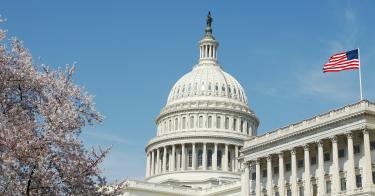It looks as if the Economic Growth, Regulatory Relief, and Consumer Protection Act (S. 2155) is heading toward a vote in the Senate, making it clear that Congress no longer views the Dodd-Frank Act as sacred text.
But although this development is welcome, it is a stretch to say the bill undoes, or even amends, much of Dodd-Frank.
For the most part, the bill provides targeted exemptions from a few regulationsfor smaller banks. This Issue Brief and Backgrounder provide more details on S. 2155, but here are the main regulatory changes:
- Limited regulatory off-ramp for some banks with less than $10 billion in total assets. This provision, known as a community bank leverage ratio, would exempt certain small banks from the risk-weighted capital requirements first imposed in the 1980s.
- Safe harbor for ability to repay rules. Under Dodd-Frank, only mortgages that meet a certain set of requirements (qualified mortgages) automatically meet the ability to repay standard (have a safe harbor). The Senate bill provides a qualified mortgage safe harbor for banks with less than $10 billion in total assets that hold mortgages on their books rather than sell them into the secondary market (where they are packaged into mortgage-backed securities by companies such as Fannie Mae and Freddie Mac).
- Stress testing relief. The Senate bill would decrease the number of scenarios—from three to two—that must be included in both Fed-conducted and company-conducted stress tests, and also changes the frequency for company-run tests, from “annual” to “periodic.”
- Volcker Rule relief. The Volcker rule ostensibly prohibits banks from what is called “proprietary trading”—trading for their own accounts rather than on behalf of clients. 2155 provides an exemption from this rule for banks with assets less than $10 billion and with total trading assets and liabilities not exceeding more than 5 percent of their total assets.
- Higher SIFI threshold. Under Dodd-Frank, banks with $50 billion or more in assets are subjected to enhanced supervision and regulatory standards on the theory that their failure would cause widespread economic harm. These banks are commonly referred to as systemically important financial institutions, or SIFIs. Section 401 of the Senate bill would raise that threshold to $250 billion, but with several major caveats.
Aside from whether these enhanced standards actually lessen the probability of a large financial firm’s failure, a closer look at S. 2155 shows that the new threshold would change little compared to current law.
For instance, the bill would also authorize the Fed to “apply any prudential standard to any bank holding company or bank holding companies” with total assets of at least $100 billion. In other words, banks with at least $100 billion—not $250 billion—would still be subject to the Fed’s enhanced supervision.
Furthermore, the bill would authorize the Fed to “tailor or differentiate among companies on an individual basis or by category, taking into consideration their capital structure, riskiness, complexity, financial activities (including financial activities of their subsidiaries), size, and any other risk-related factors that the Board of Governors deems appropriate.”
These details show that what the bill actually does is raise the threshold from $50 billion to $100 billion, while still allowing the Fed to apply special standards to banks with assets less than $100 billion.
It is simply misleading to say the bill raises the threshold from $50 billion to $250 billion.
There’s even more gray area on the actual relief for banks that fit anywhere in this asset size range because the Dodd-Frank prudential standards are based on Basel III capital rules, and these banks will not be exempt from the Basel III framework. For instance, the Fed’s final rule states that:
Enhanced prudential standards include risk-based and leverage capital requirements, liquidity standards, requirements for overall risk management (including establishing a risk committee), stress-test requirements, and a 15-to-1 debt-to-equity limit for companies that the Financial Stability Oversight Council has determined pose a grave threat to financial stability.
If the bill is enacted, banks between $50 billion and $250 billion will not be exempt from stress tests, risk management requirements, or from federal capital, leverage, and liquidity requirements. (The bill does tweak stress testing requirements, but it doesn’t eliminate stress testing). And although some of the firms might be exempt from the 15-to-1 debt-to-equity limit, the banks will not be exempt from other leverage requirements. All of these rules will remain more stringent than they were prior to the 2008 crisis.
So it is rather puzzling that the Congressional Budget Office claimsenacting the bill will increase the probability that a large financial institution will fail.
In fairness, the Congressional Budget Office claims that the probability of such a failure would only be “slightly greater” under the new legislation, and it is difficult to know exactly what this phrase means.
Either way, the Congressional Budget Office report does not provide a detailed comparison of the new regulations to current law regulations, much less an analysis of which regulations in the new framework would actually increase the probability of a firm’s failure.
Given how little the bill would actually change things for the large financial firms, it is somewhat surprising that the Congressional Budget Office published this conclusion, no matter how slight the increase in probability.
It is quite clear that the Senate bill does not undo Dodd-Frank and that its main accomplishment is providing regulatory exemptions and exceptions for smaller banks. For those banks that receive regulatory relief, the bill is surely better than nothing, but it is far from a comprehensive reform package.
This piece originally appeared in The Daily Signal



